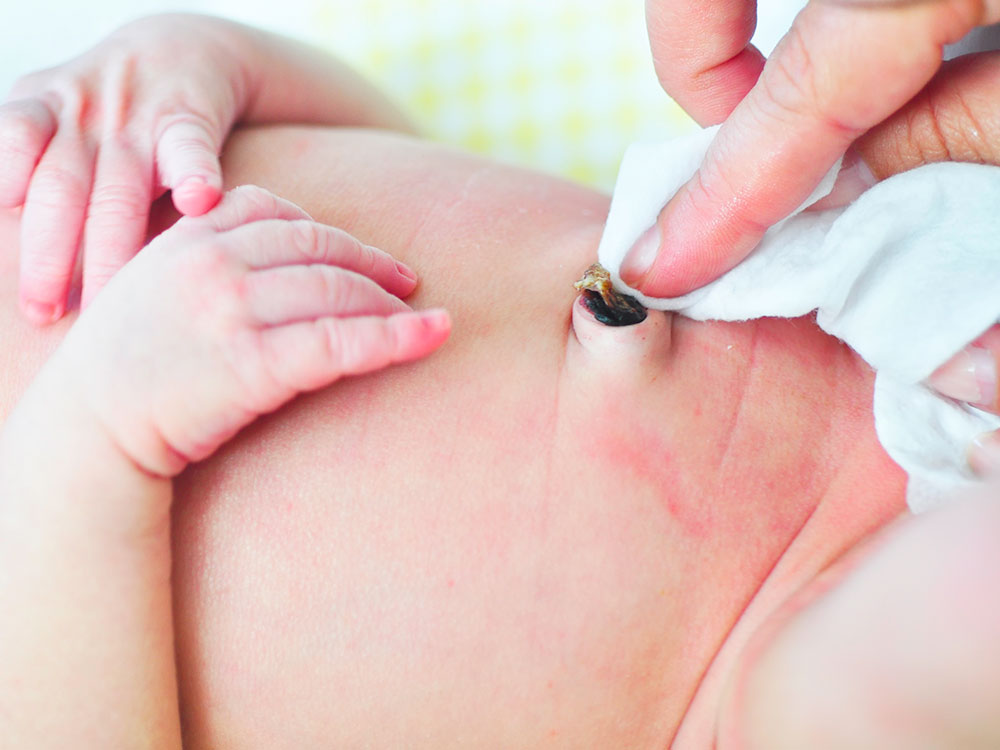
Baby Navel Care: A Comprehensive Guide for New Parents
The arrival of a newborn baby brings immense joy and responsibility. Among the many aspects of newborn care, umbilical cord care is crucial for the baby’s well-being. The umbilical cord, which connects the baby to the mother during pregnancy, serves as a lifeline, providing oxygen and nutrients. After birth, the umbilical cord is clamped and cut, leaving a small stump attached to the baby’s abdomen. This stump, known as the navel, requires proper care to prevent infection and promote healing.
Understanding the Baby’s Navel
The baby’s navel is a sensitive area that requires gentle handling. It consists of a small, round opening surrounded by a ring of skin. The stump of the umbilical cord is attached to the center of the navel. In the first few days after birth, the stump will gradually dry up and fall off, leaving a small scar.
Importance of Navel Care
Proper navel care is essential for several reasons:
- Infection Prevention: The navel is a potential entry point for bacteria and other microorganisms. Neglecting navel care can lead to infection, which can cause redness, swelling, discharge, and pain.
- Healing Promotion: Proper care helps the umbilical cord stump dry up and fall off naturally, promoting healing and preventing complications.
- Aesthetic Considerations: Good navel care can help minimize scarring and ensure a neat appearance of the navel.
Steps for Proper Navel Care
Follow these steps to ensure proper navel care for your baby:
1. Keep the Navel Clean and Dry:
- Gently clean the navel area with a soft, damp cloth or cotton ball dipped in warm water.
- Avoid using soap or antiseptic solutions, as they can irritate the skin.
- Pat the navel dry with a clean towel.
- Keep the navel exposed to air as much as possible to promote drying.
2. Avoid Covering the Navel:
- Do not cover the navel with diapers or clothing.
- Allow the navel to breathe and dry out.
- If the navel is covered, it can become moist and prone to infection.
3. Monitor the Navel for Signs of Infection:
- Check the navel daily for any signs of infection, such as:
- Redness
- Swelling
- Discharge (yellow, green, or foul-smelling)
- Pain or tenderness
- If you notice any of these signs, contact your healthcare provider promptly.
4. Allow the Stump to Fall Off Naturally:
- The umbilical cord stump will typically fall off within 1-3 weeks after birth.
- Do not pull or cut the stump, as this can cause bleeding and infection.
- Allow it to detach naturally when it is ready.
5. Bathing the Baby:
- You can bathe your baby as usual, but avoid submerging the navel in water until the stump has fallen off.
- Gently sponge the navel area with a soft cloth.
6. Follow Your Healthcare Provider’s Instructions:
- Your healthcare provider will provide specific instructions on how to care for your baby’s navel.
- Follow their instructions carefully to ensure proper healing.
Common Concerns and Solutions
1. Bleeding from the Navel:
- Slight bleeding from the navel is normal in the first few days after birth.
- If the bleeding persists or becomes excessive, contact your healthcare provider.
2. Umbilical Granuloma:
- In some cases, a small, red, fleshy bump may form at the base of the umbilical cord stump.
- This is known as an umbilical granuloma and is usually harmless.
- Your healthcare provider may recommend silver nitrate treatment to shrink the granuloma.
3. Umbilical Hernia:
- An umbilical hernia occurs when a small portion of the baby’s intestines protrudes through the navel.
- It usually resolves on its own within a few months.
- If the hernia persists or becomes larger, surgery may be necessary.
4. Omphalitis:
- Omphalitis is an infection of the navel.
- It is characterized by redness, swelling, discharge, and pain.
- Seek medical attention promptly if you suspect omphalitis.
Conclusion
Baby navel care is an essential aspect of newborn care. By following the steps outlined in this guide, you can ensure proper healing and prevent complications. Remember to keep the navel clean and dry, avoid covering it, monitor it for signs of infection, and allow the stump to fall off naturally. If you have any concerns or questions, do not hesitate to contact your healthcare provider for guidance. With proper care, your baby’s navel will heal quickly and leave a neat scar, marking the beginning of a healthy and happy life.
